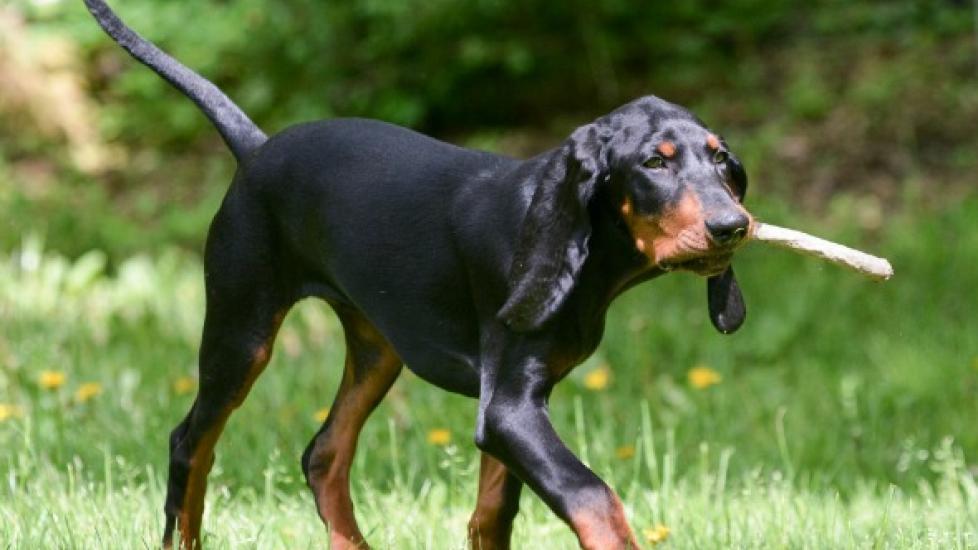Coonhound Paralysis In Dogs
Idiopathic Polyradiculoneuritis in Dogs
Acute canine idiopathic polyradiculoneuritis (ACIP) is a creeping paralysis due to acute inflammation of the nerves. This disease is often seen in dogs that live in North America as well as in those areas where raccoons are present but overall incidence is quite low. Any breed is at risk, but dogs that regularly come into contact with raccoons are at increased risk, such as hunting dogs and dogs that live in rural or wooded areas.
Symptoms presented by ACIP are also classified under a condition referred to as coonhound paralysis. Diagnosis with this disease does not necessarily involve an encounter with a raccoon.
Symptom and Types
- Symptoms usually appear 7-14 days after contact with raccoon
- Stiff gait
- Generalized slow reflexes
- Low muscle tone
- Weakened vocal ability
- Labored breathing
- Decrease in muscle bulk
- Facial muscle weakness
- Muscular weakness in all four limbs which may progresses to paralysis in all limbs
- Pain
- Oversensitivity to pain stimuli
Causes
Besides the known connection that has been made with affected dogs coming into contact with raccoon saliva, the exact cause of ACIP is still unknown. Viral or bacterial infections are suspected to be responsible, and because of the correlation with the nervous system and neural pathways, an autoimmune link is being researched. It is thought that white blood cells may be attacking the nerves.
Diagnosis
Your veterinarian will take a detailed background medical history from you before making the full physical evaluation. You will need to provide a thorough history of your dog's health, onset of symptoms, and possible incidents that might have preceded this condition, such as whether your dog has had recent contact with a raccoon.
As part of a standard physical examination, routine laboratory tests will include a complete blood count, biochemistry profile and urinalysis. Usually the results of all these tests are found to be within normal ranges. More specific tests will also be done, including specific testing for determination of abnormalities of electric activity in peripheral nerves, and an analysis of the spinal fluid, which will require a spinal tap, and the brain fluid (cerebrospinal fluid, or CSF), to look for specific infections that may be causing the paralysis.
Treatment
Onset of the symptom may occur rapidly, but in many cases, they are progressive, worsening over the course of days and weeks as the paralysis spreads from the back legs through the body, and the respiratory system becomes more impaired. If the inflammation has progressed to the point that your dog is having difficulty breathing, it may need to be hospitalized for few days until it is fully out of danger.
Some patients can develop severe respiratory problems, requiring ventilator support until the system has recovered enough for the dog to breath easily again. Because affected animals are often not able to drink water, your veterinarian will also administer intravenous fluids if your dog has become dehydrated. Depending on how far the disease has progressed, your dog may also need physiotherapy because of generalized muscle atrophy.
Living and Management
Good home nursing care is mandatory for speedy and successful recovery. Some affected dogs may require special consideration for proper feeding and drinking; you may even need to feed your dog by hand for a few days until it is able to eat on its own again. Rest is essential, and the easiest way to achieve is that is by setting aside a quiet, comfortable space in the home, away from entry ways and heavy use rooms, where your dog can recover. Do not allow the dog to get overexcited, or be bothered by active children or other pets. If it is difficult to limit your dog's movement, cage rest may be considered a more practical option.
While your dog is resting, make sure to check in throughout the day, turning it from one side to the other about every four hours in order to prevent pressure sores, which can result from prolonged rest in one position. Regular bathing is also required to prevent urine and fecal scalding. During the recovery period, stay close to home, with just short, slow outdoor trips for urinary and bowel relief. If your dog is too paralyzed to walk, you may need to consult with your veterinarian about the need for a catheter.
Your veterinarian will brief you on the physiotherapy protocols to prevent further aggravation of weakened muscles, but massaging the muscles and gently stretching the dog's limbs will help to keep the muscles from atrophying excessively.
You may need to take your dog to veterinary physiotherapist for physiotherapy sessions over the course of several months. Stay in touch with your veterinarian, discussing any complications you may notice overtime and progress your dog is making. You may need to take your dog to a veterinarian for a regular progress evaluation every two to three weeks.
Recovery is different for individual dogs. Some may begin to recover quickly, within days and weeks, while others never completely recover. At home care and therapy is essential, in either case.
